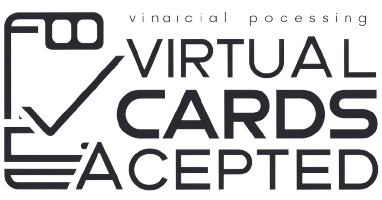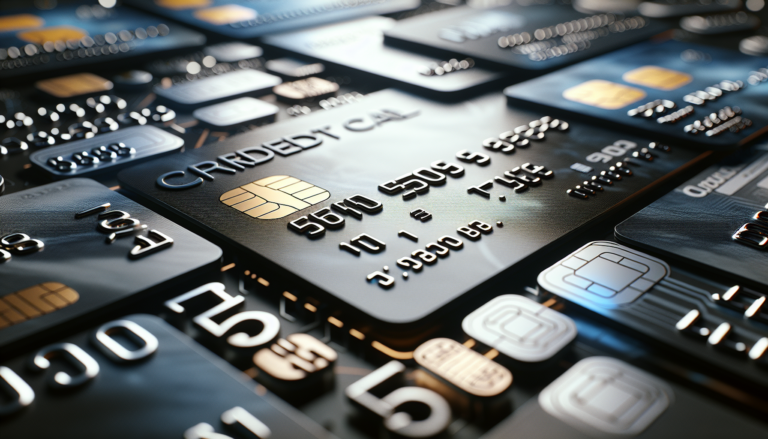When you receive a new credit card, one of the first things you might notice is the long string of numbers embossed on the front. While these numbers may seem random, they actually follow a specific structure that provides important information about the card issuer and your account. In this article, we’ll explore the number that Mastercard starts with and delve into the anatomy of a Mastercard number to better understand its components and security features.
What Number Does Mastercard Start With?
Understanding the Issuer Identification Number (IIN)
Every credit card number begins with a series of digits known as the Issuer Identification Number (IIN), previously called the Bank Identification Number (BIN). The IIN is a six-digit code that identifies the financial institution that issued the card. Mastercard numbers always start with specific digits that are part of their designated IIN range.
The IIN serves several purposes. It allows merchants to identify the card issuer and direct transactions accordingly. It also helps prevent fraud by enabling systems to quickly flag numbers that don’t match the expected pattern for a given issuer. Understanding the IIN is crucial for businesses that accept credit card payments.
Mastercard’s Specific Starting Digits
Mastercard credit card numbers begin with the digits 51 through 55. This means that any valid Mastercard will have a number that starts with 51, 52, 53, 54, or 55. These digits are part of Mastercard’s designated IIN range and immediately identify the card as a Mastercard product.
It’s important to note that while all Mastercards start with these digits, not all cards beginning with these numbers are Mastercards. The subsequent digits in the IIN provide more specific information about the issuing institution. However, the 51-55 prefix is a clear indicator that you’re dealing with a Mastercard.
The Structure of a Mastercard Number
Components of a Mastercard Number
A typical Mastercard number contains 16 digits, although there are some exceptions. These digits are grouped into several components, each serving a specific purpose:
- Issuer Identification Number (IIN): The first six digits, indicating the card issuer, as discussed above.
- Individual Account Identifier: The next 6-9 digits represent your unique account number with the issuing institution.
- Check Digit: The final digit in a credit card number is used to validate the entire number using the Luhn algorithm, which we’ll discuss shortly.
Understanding this structure helps demystify the long string of numbers on your Mastercard. Each component plays a role in identifying, securing, and validating the card.
The Role of the Luhn Algorithm in Validation
The Luhn algorithm, also known as the “modulus 10” algorithm, is a simple checksum formula used to validate various identification numbers, including credit card numbers. Its primary purpose is to catch accidental transcription errors that could result in an invalid number.
The algorithm works by applying a series of steps to the credit card number:
- Starting from the rightmost digit and moving left, double the value of every second digit.
- If doubling a digit results in a value greater than 9, subtract 9 from the result.
- Sum all the digits, including those that weren’t doubled.
- If the total modulo 10 equals 0 (i.e., the total ends in zero), the number is valid according to the Luhn algorithm.
The final digit in a Mastercard number, the check digit, is calculated using the Luhn algorithm to validate the card number. This provides a quick way to catch common errors like mistyped or transposed digits.
Security Features of Mastercard Numbers
The Importance of the CVV
In addition to the main card number, Mastercards also feature a Card Verification Value (CVV), a three-digit security code printed on the back of the card. The CVV provides an extra layer of security for “card not present” transactions, such as online purchases, where the physical card can’t be verified.
Merchants are required to request the CVV when processing transactions without the physical card. This helps ensure that the person making the purchase actually has the card in their possession, reducing the risk of fraud. The CVV is not part of the card number itself and is not stored in any databases, making it a valuable security feature.
Understanding the Expiration Date
Another important security feature on your Mastercard is the expiration date. This is typically a four-digit number in the format MMYY, indicating the month and year after which the card is no longer valid. For example, a card with an expiration date of 12/24 would be valid until the end of December 2024.
The expiration date serves several purposes:
- It limits the time a physical card can be used, reducing the window for potential fraud if the card is lost or stolen.
- It allows issuers to periodically update cards with new security features and technologies.
- It provides a regular check-in point for issuers to review account status and cardholder information.
When making a purchase, merchants are required to submit the expiration date along with the card number and CVV. Transactions with an expired date will be declined, preventing the use of outdated or invalid cards.
Preventing Credit Card Fraud
Best Practices for Safeguarding Your Mastercard
While features like the CVV and expiration date provide added security, it’s still important to take proactive steps to protect your Mastercard information. Some best practices include:
- Keep your card secure: Always store your Mastercard in a safe place and don’t leave it unattended in public.
- Shield your card number: When entering your card details online, make sure you’re on a secure website (look for the “https” in the URL) and avoid saving your card information on merchants’ websites.
- Monitor your statements: Regularly review your Mastercard statements for any suspicious activity or unauthorized charges.
- Be cautious of unsolicited requests: Mastercard will never ask for your card details via email or phone. Be wary of any unsolicited requests for your card information.
By following these simple guidelines, you can significantly reduce the risk of your Mastercard falling into the wrong hands.
Recognizing and Responding to Fraudulent Activity
Despite best efforts, credit card fraud can still occur. It’s important to know the signs of potential fraud and how to respond. Red flags might include:
- Unauthorized charges on your statement, especially from unfamiliar merchants.
- Unexpected declined transactions, which could indicate your card has been blocked due to suspected fraud.
- Receiving a new card in the mail that you didn’t request, which could be a sign of account takeover.
If you suspect fraudulent activity on your Mastercard, contact your issuing bank immediately. They can block the card, investigate the suspicious charges, and issue you a new card if necessary. It’s also a good idea to file a police report for any confirmed fraud, as this documentation may be necessary for resolving any related issues like credit report errors.
Understanding what number Mastercard starts with and the structure of Mastercard numbers is not just trivia – it’s an important part of being an informed and empowered cardholder. By recognizing the components of your card number and taking steps to protect it, you can enjoy the convenience of your Mastercard with added peace of mind.
See also:






